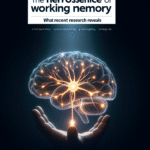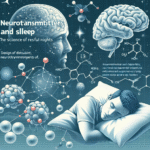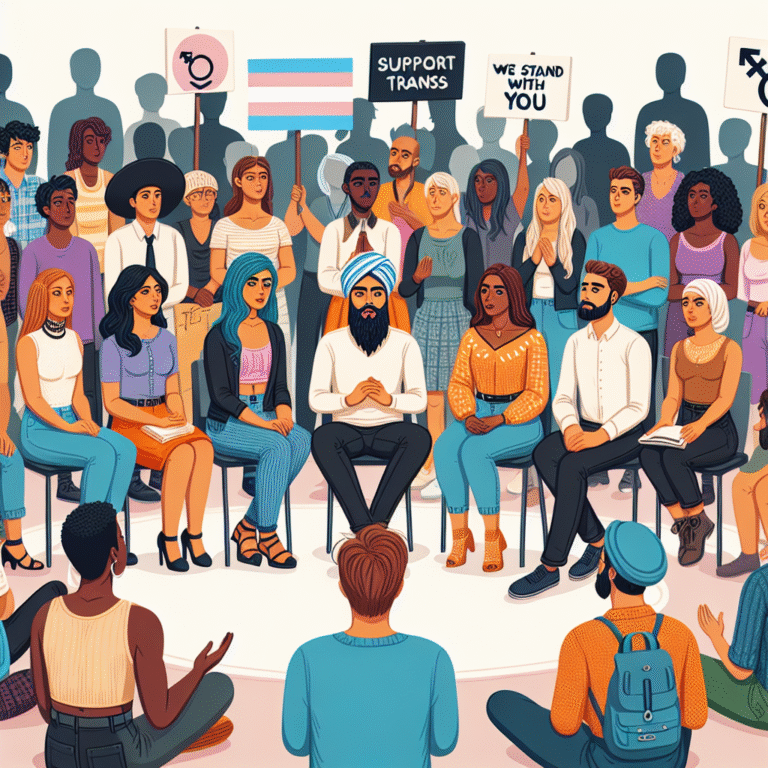
Beyond the Binary: Understanding Gender Identity in Modern Psychology
Introduction

As awareness about gender diversity grows, so does the need for insightful discussions on the complexities of gender identity. The importance of this topic cannot be overstated; understanding gender identity is paramount in supporting individuals as they navigate their personal journeys. In this article, we will explore critical aspects of gender identity as it relates to modern psychology, offering real-world insights, evidence-based research, and concrete recommendations for fostering inclusion and awareness in society.
The Evolving Framework of Gender Identity
The Historical Context
Historically, societies have viewed gender through a rigid binary lens—male and female. This framework has its roots in an understanding of biological sex, which complicates the dynamics of identity. However, as anthropologists and psychologists began to study various cultures, it became apparent that many societies recognize more than two genders. For instance, some Indigenous cultures in North America acknowledge Two-Spirit individuals, who embody a mix of male and female attributes.
Modern Reinterpretations
In modern psychology, the conversation has evolved significantly. Gender identity is now seen as a spectrum rather than a binary. According to the American Psychological Association, gender identity refers to the personal sense of one’s own gender, which may or may not correspond with their biological sex at birth. This understanding is foundational for Beyond the Binary: Understanding Gender Identity in Modern Psychology, as it encompasses a diverse range of identities including but not limited to transgender, non-binary, genderqueer, and genderfluid.
Theoretical Models
A range of theoretical models helps illuminate the complexities of gender identity. Two notable ones are:
-
- Gender Schema Theory: Proposed by Sandra Bem in the 1980s, this theory suggests that children learn about gender roles from their environment and develop a mental framework, or schema, to categorize their experiences.
-
- Minority Stress Theory: This model highlights how social stigmas experienced by minority groups, including those with diverse gender identities, can lead to chronic stress and mental health challenges.
By recognizing these theories, mental health professionals can better understand and address the experiences of individuals who fall beyond the binary.
Case Study: Transgender Youth Experiences
A poignant example can be seen in the experiences of transgender youth. Research indicates that these young individuals often face significant harassment and discrimination in their everyday lives, leading to higher rates of anxiety and depression. A longitudinal study published in the Journal of Adolescent Health found that supportive social environments could mitigate these negative effects. The study underscores the critical role of acceptance in shaping positive mental health outcomes—demonstrating that Beyond the Binary: Understanding Gender Identity in Modern Psychology is crucial for psychological support.
| Study Aspect | Findings |
|---|---|
| Population Studied | Transgender youth aged 12-22 |
| Key Findings | Supportive environments reduce depression and anxiety by 30% |
| Recommendations | Promote inclusivity in schools and communities |
The Role of Psychology in Gender Identity
Therapeutic Practices
Understanding gender identity is essential for mental health practitioners. As therapists engage with clients exploring their gender identities, it’s critical to employ affirmative practices. Affirmative therapy validates individuals’ gender identities, assisting them in exploring their self-concept and the social factors influencing their lives.
Language Matters
The language used when discussing gender identity can greatly impact individuals’ experiences. Terms like genderqueer, agender, and gender non-conforming should be used thoughtfully and respectfully. Encouraging clients to specify their preferred pronouns is a simple yet profound practice that fosters an environment of respect and validation.
Case Study: Affirmative Therapy
One compelling case involved a non-binary client who felt elevated levels of stress due to societal expectations surrounding traditional gender roles. Through affirmative therapy, they explored their identity with support from the therapist, who employed a non-judgmental framework. Over sessions, the client reported feeling a significant reduction in anxiety and an increased sense of self-acceptance. This case exemplifies how modern psychological frameworks can assist individuals beyond the binary.
Intersectionality and Gender Identity
Understanding Intersectionality
Intersectionality plays an essential role in understanding gender identity. Coined by Kimberlé Crenshaw, this concept acknowledges how various social identities—including race, class, sexuality, and ability—interact and shape individual experiences. Recognizing that gender identity is not experienced in isolation is crucial for comprehending the full spectrum of challenges faced by individuals.
Case Study: A Non-Binary Perspective
Consider a non-binary individual of color who faces discrimination based on both race and gender identity. This person’s experience is compounded by societal biases in ways that differ dramatically from those who are white and identify as non-binary. Research shows that individuals at this intersection report higher levels of mental health challenges, emphasizing that Beyond the Binary: Understanding Gender Identity in Modern Psychology also involves acknowledging these intersecting social identities.
Statistical Insights
To illustrate the impact of race on gender identity, a survey conducted by the Williams Institute found that transgender people of color experience rates of harassment and violence at double the rate of their white counterparts. These statistics highlight the importance of adopting an intersectional approach in understanding gender identity, leading to better mental health outcomes through tailored support systems.
Creating Inclusive Spaces
Educational Institutions
Schools represent a critical space for fostering understanding and acceptance of diverse gender identities. Implementing educational programs that teach about gender diversity from an early age can cultivate a culture of respect and inclusion. Schools can take steps like:
-
- Implementing anti-bullying policies that protect gender-diverse students.
-
- Educating staff and students about various gender identities and expressions.
-
- Creating gender-neutral bathrooms to accommodate all students.
Workplace Inclusion
Organizations should recognize the importance of inclusive practices in the workplace. Implementing diversity training, adopting non-discriminatory policies, and fostering an environment that encourages open discussions about gender can promote fulfillment and well-being in all employees.
Case Study: Workplace Diversity
A technology firm that implemented gender diversity training reported increased employee satisfaction and retention rates post-implementation. Employees felt safer expressing their identities, which translated into enhanced productivity and innovation. This example reflects the tangible benefits of fostering an inclusive environment—underlining that Beyond the Binary: Understanding Gender Identity in Modern Psychology extends into real-world applications.
Psychological Implications
Mental Health Considerations
Research indicates that individuals who identify as non-binary or transgender often experience heightened levels of stress and mental health challenges due to societal rejection and discrimination. These findings emphasize the importance of mental health support that is not only affirming but also knowledgeable about the unique challenges that gender-diverse individuals might face.
Effective Interventions
Interventions such as counseling and support groups tailored specifically for gender-diverse individuals can provide safe spaces for exploration and expression. Encouraging connections among individuals with shared experiences can foster resilience and community support.
Table: Mental Health Interventions for Gender-Diverse Individuals
| Intervention Type | Description | Impact |
|---|---|---|
| Peer Support Groups | Safe spaces for sharing experiences | Reduced feelings of isolation |
| Affirmative Therapy | Validation of gender identity | Improved self-acceptance |
| Educational Workshops | Informative sessions on gender diversity | Enhanced awareness in community |
Conclusion
As we navigate the waters of gender identity, it is imperative to embrace the rich tapestry of identities that exist beyond the binary. Understanding these complexities through the lens of modern psychology not only enhances our knowledge but can also lead to meaningful changes in society. The journey towards inclusivity and acceptance is collaborative and requires informed dialogues, compassionate actions, and sustained efforts across all spheres of life.
Let’s lead with empathy and create spaces that honor every individual’s identity. Embracing the principles of Beyond the Binary: Understanding Gender Identity in Modern Psychology establishes a foundation upon which we can all build more inclusive, respectful, and supportive communities.
FAQs
1. What are the most important factors in female attraction?
Female attraction involves complex emotional, psychological, and social elements that go far beyond physical appearance. “Understanding Gender Identity” can also play a significant role in attraction as it relates to how one identifies and connects on a personal level.
- Emotional Connection: Women value emotional depth and intimacy. Creating a safe space where emotions can be shared openly fosters trust and deepens bonds. For insights on this dynamic, check out this article on Emotional Intelligence and Relationships.
- Confidence: Confidence signals security and self-assurance, traits universally appreciated. “Understanding Gender Identity” helps individuals align confidence with authenticity, ensuring that self-expression resonates naturally.
- Vulnerability: Being emotionally available and vulnerable showcases strength and authenticity. Vulnerability can be especially meaningful when explored through “Understanding Gender Identity,” as it underscores the importance of being true to oneself.
- Social Proof: Perceptions of social acceptance and positive peer relationships significantly impact attraction. When people positively regard you, it reflects desirable traits. Learn more about the psychology behind social proof here.
- Communication Skills: Effective communication goes beyond words. Listening actively, responding empathetically, and engaging meaningfully create strong rapport. Building such skills benefits from “Understanding Gender Identity” to foster inclusive and meaningful conversations.
2. How can I make myself more attractive to women?
Making yourself more attractive involves cultivating confidence, emotional intelligence, and authenticity. A solid understanding of these elements, as well as “Understanding Gender Identity,” can provide deeper insights.
- Cultivate Confidence:
- Confidence stems from knowing your strengths and owning your identity.
- “Understanding Gender Identity” empowers self-awareness, allowing you to express yourself confidently and authentically.
- Foster Emotional Connections:
- Invest in understanding her emotions and values.
- Exploring topics like “Understanding Gender Identity” demonstrates openness to learning and evolving together.
- Show Authentic Vulnerability:
- Sharing personal struggles and dreams creates relatability. Being vulnerable also reflects emotional strength, a key aspect of attraction. This article on Building Strong Relationships delves into this concept.
- Enhance Social Skills:
- Practice kindness and empathy in your interactions.
- Building inclusive social circles and fostering understanding starts with “Understanding Gender Identity,” which can help bridge diverse connections.
- Personal Growth Matters:
- Pursue hobbies, education, or activities that enrich your life.
- Engaging in meaningful pursuits aligns with “Understanding Gender Identity,” showcasing a well-rounded and passionate personality.
3. Is physical appearance important for attraction?
While physical appearance can ignite initial interest, it is not the sole determinant of long-term attraction. The role of “Understanding Gender Identity” helps move the focus toward deeper and more meaningful qualities.
- First Impressions: Physical presentation (e.g., grooming, style) creates an immediate impression. However, personality and emotional connection often surpass physical traits in importance. For tips on balancing inner and outer beauty, see this guide.
- Beyond Looks: Qualities like kindness, humor, and authenticity often outweigh superficial attributes. “Understanding Gender Identity” highlights how alignment between self-perception and outward expression influences attractiveness.
- Personal Care: While you don’t need to meet societal beauty standards, taking care of your health and hygiene reflects self-respect. The broader conversation around appearance benefits from incorporating insights on “Understanding Gender Identity.”
4. Can humor enhance attraction?
Yes, humor is a powerful aspect of attraction. It fosters connections, showcases intelligence, and creates memorable interactions. Moreover, humor can be a tool for navigating deeper conversations, such as “Understanding Gender Identity.”
- Creates a Positive Atmosphere: Humor makes interactions enjoyable, breaking the ice and fostering comfort.
- Demonstrates Intelligence: Wit is often linked to quick thinking and creativity, traits women find appealing.
- Builds Emotional Bonds: Shared laughter creates a sense of unity, making people feel closer. Humor can also help introduce complex topics like “Understanding Gender Identity” in an engaging and accessible way.
- Signals Confidence: A good sense of humor indicates comfort in social settings. For an in-depth look at how humor plays into relationships, explore this article on The Psychology of Laughter.
5. How does social proof influence attraction?
Social proof—how others perceive you—has a significant impact on attractiveness. It not only highlights your likable traits but also reflects your ability to connect with others effectively.
- Peer Approval: Positive relationships and a good reputation signal emotional intelligence and relatability. Social dynamics are also informed by “Understanding Gender Identity,” as inclusivity and empathy are increasingly valued traits.
- Reputation Signals: Women often observe how you treat others, as it reflects your core values. This article on Empathy and Relationships explains how compassion shapes perception.
- Compatibility Indicators: Being well-regarded by friends and colleagues indicates an ability to form strong bonds, a key factor in attraction. “Understanding Gender Identity” plays into this, as it emphasizes mutual respect and open-mindedness in all connections.
By incorporating these strategies and continuously expanding your self-awareness through resources like Psyforu, including deep dives into “Understanding Gender Identity,” you can build authentic and meaningful connections with others.
By exploring the intricate dimensions of gender identity through this comprehensive lens, we each have the power to advocate for change and uplift the voices that have long been marginalized. Let’s celebrate the beauty of diversity and ensure that everyone feels embraced in their true selves.











